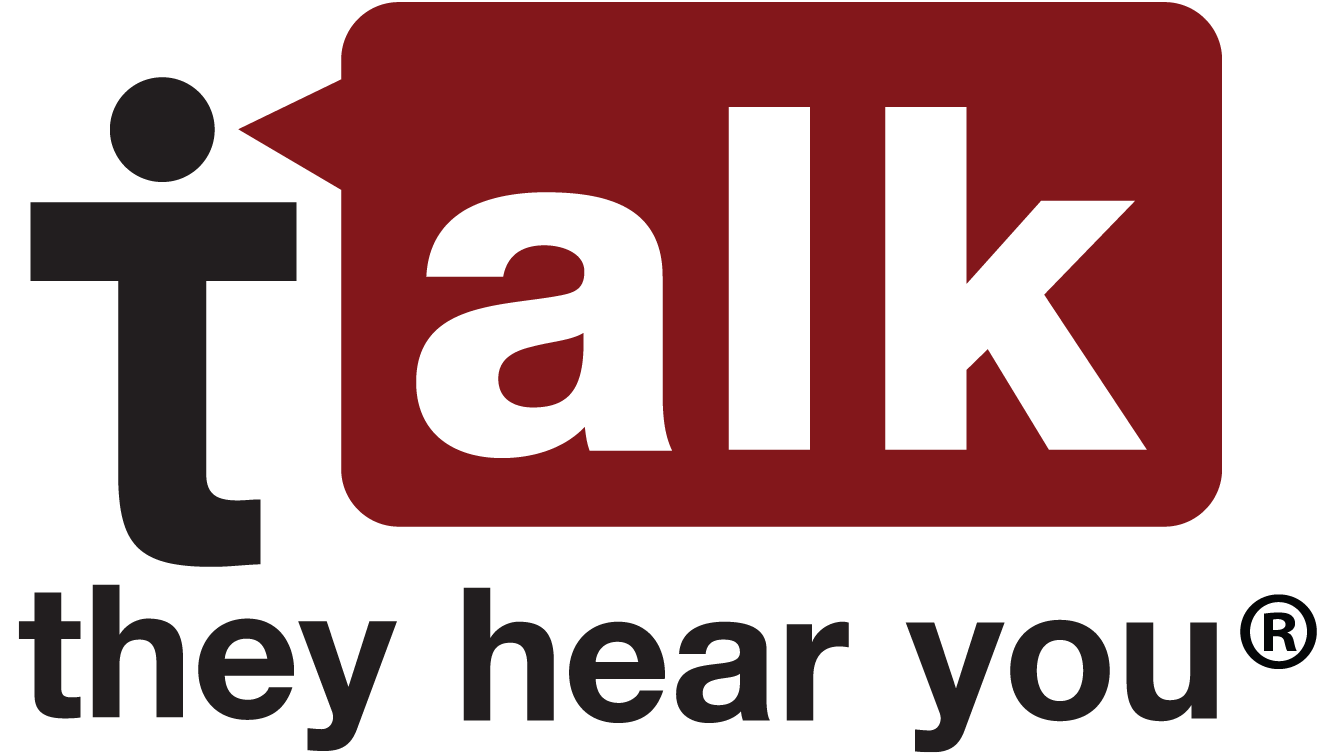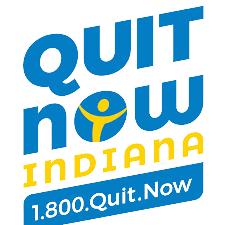Stories and Successes |
|
3/27/2023 0 Comments Above the INfluenceMake smart choices surrounding alcohol use. Binge drinking - especially underage - can have some serious health, social, and physical repercussions. Waiting to drink - and drinking responsibly - until you are of 21 years old is what is best. However, if you are going to drink, making smart choices surrounding consumption is important!
Check Your Drinking: "I don't have a problem!" is something we hear a lot when we talking about alcohol consumption. Click here to take a short quiz to screen yourself for alcohol dependency. After the quiz, you'll learn ways to quit or lessen your drinking! If you or a loved one is struggling with substance use disorder or alcohol use disorder and wants connected to services or resources, call the Jay County Drug Prevention Coalition at (260) 251-3259 and ask to speak to Josh.
0 Comments
4/7/2022 0 Comments 8 reasons kids try drugsOne of the most consistently searched questions by parents after they discover their kids have dabbled with substances is: ‘Why do kids do drugs?’
The best time to learn, though, is before. That’s why we’ve curated the best, most relevant research about the top 8 reasons why kids make the decision to try drugs. Here’s a sneak preview:
REASON #1: THEY’RE NOT THAT SMART (YET)Raise your hand if you didn’t do something reckless or foolish when you were a teenager. Anyone? Of course, we all did dumb things when we were growing up, some we got caught for and some we still have anxious nightmares about. It’s one of the key reasons why it’s so nerve-racking to be a parent. Whether you consider it a rite of passage to do something reckless or it scares you silly, no teenager will become an adult without doing at least a few things to test the limits. Our hope is to create an environment where the risks involved are as minimized as possible. It’s important to understand what’s going on inside the brains of kids as they travel through adolescence. It’s easy to dismiss kids as reckless and foolish or to turn a blind eye to their exploits since perhaps we didn’t have any supervision when we were their age. The more we understand what’s going on in their development process, the better equipped we will be to guide them through the transition to take wise ownership of their lives. The prefrontal cortex is the part of the human brain where rational and logical thinking occurs. In adolescents, it’s not developed…yet. We’ve learned from brain researchers that a kid’s brain is not fully developed until around age twenty-five. That means teenagers lack the capacity to make informed choices for themselves and others that reflect common sense or logic. They can’t yet process through their personal values, either, and are driven more by emotion and a desire for the chemical highs that come from taking risks. To put it another way, teenagers don’t yet have the capacity to think through the long-term consequences of their decisions. Rather than looking at their foolish choices through a lens of morality, it’s more productive to look at their behaviors through the lens of brain development. What does that mean? It means we need to be their thinking brain for a while longer. Developmentally, they’re all gas pedal and no brakes. We need to help them make smart and healthy choices — we need to act as their brakes. When they lack the capacity to do so, we need to make those choices for them, when appropriate. This goes against the ‘cool parent’ philosophy of providing substances for teenagers to consume as long as there is adult supervision. Kids are uniquely susceptible to addiction compared to adults, and the potential damage to their development and health is real. In other words, don’t provide substances or turn a blind eye. You need to be their thinking brain and help them make the best choices that give them the best opportunity to thrive in life. Sure, you might not be thought of as cool, but it’s worth the cost. If you could go back in time and add a voice of caution, wisdom, and long-term consequences, wouldn’t you? REASON #2: THIRST FOR DOPAMINEMaybe you remember the PSA after-school specials from the ’80s and early ’90s. They told cautionary tales of hardcore peer pressure in the halls of high school. They made it seem overly simple to avoid drugs and alcohol: “Just say no”. But, that’s not the whole story. That’s not the only reason kids decide to do drugs. Dr. Dan Siegel is a clinical professor of psychology at UCLA and has written a lot about how the brain works through the developmental stages of adolescence. One key finding he’s shared is the increased reward drive that’s unique in the adolescent brain. He says, “During adolescence, there is an increase in activity of the neural circuits utilizing dopamine, a neurotransmitter central in creating our drive for reward…this enhanced dopamine release causes adolescents to gravitate toward thrilling experiences and exhilarating sensations.” That means teens are more impulsive and prone to risky behaviors — anything that will satisfy their brain’s craving for dopamine. Doing something risky means their brains will feel more fully satisfied than standing on the sidelines. Teens naturally pull away from adults and instead invest most of their time and energy in peer relationships. That’s normal and expected. With their craving for dopamine from thrilling activities, teens will often turn to risky behaviors with substances to satisfy their craving – not to mention impress their peers. It’s not drugs or alcohol they crave, it’s the feeling they get after doing something risky. But perhaps there’s an opportunity to work with our kids and their natural, healthy, thirst for dopamine. What could it look like to provide them opportunities to be thrill seekers in more controlled, safe conditions? If you have a kid who’s especially interested in taking risks, then take the initiative to avoid their boredom turning to harmful substances. Give them opportunities to explore their desire for risk, but make sure it’s with helmets and harnesses. Thrill-seeking doesn’t just need to be through action sports, either, it can come from posting a TikTok video or doing standup comedy. It can come even through doing something challenging, like volunteering at a soup kitchen and engaging with unhoused people. REASON #3: NEED FOR ACCEPTANCEKids who perceive themselves as popular, or who especially desire to be popular, are at a higher risk of substance use. The Journal of Adolescent Health published a study of nearly two thousand adolescents and found a high correlation between substance use and perceptions of popularity. The search for popularity is linked to the desire for acceptance — everyone wants to fit in, blend in with the crowd, follow the social norms effectively, and play to the trends. Underneath that, though, is a deeper desire for belonging. Belonging is different from acceptance or fitting in. The rules of acceptance are adhering to the group — if you deviate from the rules, you get rejected, shamed, or humiliated. The rules of belonging are different: even with your differences, even if you don’t fit in, we still want you here. Our kids are growing up in a digital world with social media. No matter what new technology emerges, teens will continue to use social media and gaming platforms to interact with each other socially. In fact, there have been some studies that have linked the intensive use of social media with increased predictive factors for substance use. One opportunity in our current digital age is to help your kid reset their perception of themselves and what it means to be cool. Popularity is an abstract concept, and the measures kids use to evaluate it such as the number of likes on a social media post or the number of followers they have will always fail to give them what they’re looking for. We want to help our kids find a group of friends they can belong to, and likely that will develop naturally as they spend time with other kids who share similar interests. REASON #4: CONFUSED SOCIAL NORMSMaybe you’ve heard this defense before: “But everyone is doing it!” It’s the worst excuse in the book (true statement: look it up). To a kid, though, it’s not an excuse – it’s as good as fact. That’s called the Social Norms Theory, and understanding it is the key to one of the most effective prevention strategies out there. The simple idea is this — kids inevitably assume that “everyone is doing it” – that most kids are experimenting with harmful substances. Maybe they heard the same story from three different friends at school, exaggerated with each re-telling of what some kid at school did at a party that weekend. Wherever they go on campus, “everyone” is talking about it. Their perception becomes inflated, distorting the truth. But reality is different from perception. Most kids aren’t doing drugs or drinking alcohol. That’s the Social Norms Theory in a nutshell. The proven prevention model aims to educate kids about the facts and realities of what’s really going on — how many other kids are actually drinking, vaping, and using drugs. What the research has found over the years is when kids discover the truth that not as many kids as they think are doing those things, then they’re less likely to do them, too. The truth is a powerful, effective prevention strategy. If we can correct misperceptions and misinformation, our kids will be better off. If we can offer to them positive and aspirational examples of people who are deemed ‘cool’ and lead remarkably healthy, clean, lifestyles — and deliberately point that out to kids — then we can actually alter their normal instinctual habits. That’s it. That’s what we’re all about and what we’re trying to do with our videos and curriculum. Let’s do it together — let’s put the correct information and role models in front of our kids deliberately so they can have the best opportunity to make the wisest decisions for themselves. REASON #5: TO FEEL ADULT-ISHEvery teenager wants to become an adult, soon. They’re done with restrictions and sick of limits and rules. They want to organize and ordain everything around them – their time, what they eat, where they go, and what they do. Do you remember as a teenager how much energy you spent trying to work your way around the restrictions your parents set for you? Everyone has a few secret memories they still hold onto and are nervous for their parents to find out even if they’re parents themselves. Teenagers can’t stand boundaries and restrictions. And, they have excellent reasons, really. Developmentally, they’re in an important phase where they’re trying to figure out life on their own and prepare for a time soon coming when they will be responsible for themselves. They need to discover their boundaries and carve out their own path. They want to stay up late. They want to watch what they want to watch. They want unlimited access to technology. They want the freedom to go wherever they want when they want. They want to discover how life will work best for them. Parents, we know that’s a big part of the process. We know that we have to give more and more freedom and responsibility to our teenage children. In fact, we want to. We want to see them become more mature, wise, and thoughtful about how they steward their lives. We know how the teenage years are an intense time of training for life. It’s a stressful time for them, not to mention for us. They’re under constant pressure to perform well academically, to fit in with their peers, and to make choices about their future as much as choices for their wardrobe. With so much stress and pressure, it’s no wonder they make some careless mistakes. And, we also want them to be safe and make smart choices. We know how their developing brains have yet to grasp the wisdom they need to manage their own lives effectively. They still need us, although it looks different from when they were younger. They need us to start to serve as their coach and guide and steer them away from harm and towards experiences and choices that will assist them in growing up well. Here’s the deal. As much as teens grate against the rules, restrictions, and boundaries adults set for them — they still need them. They aren’t wise enough (yet) to make the best choices for themselves. They lack the context, life experience, and ability to see how their current choices will affect them in the future. They need help in the form of guidance and especially through boundaries and guardrails we set for them. That’s our responsibility. We need to continue operating as their brake as they push down the gas pedal. In fact, even though they roll their eyes and argue at every turn, they know deep down that the restrictions we set for them express our love and concern. Kids who have adults in their lives who give them too much freedom too early often develop a deep-seated belief that they aren’t valuable or worthy, and they carry that fundamental belief with them into adulthood. REASON #6: CURIOSITYCuriosity isn’t just bad for the cat, it’s the key driver in many poor decisions made by teenagers throughout the ages. Since their brains aren’t fully developed yet, they lack the ability to process long-term consequences. Although we might dismiss them as naive or young, experimentation is actually a building block for understanding boundaries and limits. That’s one of the reasons why parents might want to consider sharing their own experiences with experimentation when they were younger, especially to highlight the negative effects substance use had on their lives. If a teenager hasn’t ever seen or experienced inebriation, they might only consider the more exciting effects they see while watching a t.v. show or hear a peer talk about a party experience they had. Also, parents can take initiative and talk about the harmful effects that alcohol and drugs can have on someone. Seriously, you can start a conversation with them by saying, “You might be curious about what it feels like to drink alcohol. Let me tell you…” By sharing what might happen to them, you might help extinguish some of the curiosity that would cause them to experiment. REASON #7: ESCAPEIt’s not uncommon for teenagers to seek out releases from their frustration, anxiety, or pain. Since emotional and mental health isn’t something taught in schools (yet), most kids don’t have the capacity or the tools to manage uncomfortable feelings and experiences. If the adults in their life model an escape approach to negative emotions, then chances are, they’ll follow suit. The danger is this: substances work. They numb our feelings and detach us from the implications of whatever situation we feel burdened by. At least in the short term. The problem is in the long term. Not only will consuming substances like drugs and alcohol harm your life, and potentially turn into a lifetime of addiction struggles and health problems, but the underlying issues, feelings, and problems are carried forward. Parents and adults who work with kids must be aware of the example they set. It’s easy to joke with other adults about a happy hour or ‘beer o’clock’ with teenagers around, giving them not-so-subtle messages that when life is stressful or hard, the quickest and most effective solution is to drink. It’s also important to be mindful of the pressures and expectations that kids feel from their parents, peers, and culture. Recently, new studies were released by the National Academies of Sciences, Engineering and Medicine and the Robert Wood Johnson Foundation which defined a new group of at risk-youths: teenagers who feel the pressure to perform at high levels. The Washington Post reports, “Luthar’s studies have found that adolescents in high-achieving schools can suffer significantly higher rates of anxiety, depression, substance abuse, and delinquent behaviors, at least two to three times the national average. Some warning signs, like excessive peer envy and cheating, tend to emerge in middle school, but other symptoms of stress are being seen as early as elementary school. When a child’s sense of self-worth is dependent on what they achieve, it can lead to anxiety and depression. Anxiety can come from worrying about keeping up with or outshining peers, while depression can be caused by a failure to achieve.” It might be easy to overlook a kid who’s doing well in school and exhibits personal responsibility for academics and their schedule as a kid who’s doing well in all areas of life. It’s important to check in about their stress levels and offer multiple avenues of stress relief. REASON #8: BOREDOMWe’d like to introduce you to the groundbreaking work from Peter Benson. Peter’s TED talk, if you haven’t seen it, is revolutionary. At the time of his research, Benson observed that our nation’s approach to children was all about deterring them from negative behaviors. Prior to him, “the predominant approach to youth development was naming youth problems and trying to prevent them.” (Wikipedia) So, instead, he developed the assets approach — he focused on helping young people discover and define their strengths. The key to the theory is to help kids find something that makes them come alive with joy, energy, and interest to cloud out any false claim a substance might make about what it can offer. Benson’s developmental assets framework became the predominant positive youth development approach in the world, cited more than 17,000 times, and the framework and surveys developed to measure the assets have been used with more than 3 million youths in more than 60 countries. In developing his approach, Benson interviewed thousands of kids and tracked them from early childhood to adulthood. Kids that find their “spark” — another word for their “natural high” — are far more likely to lead happy and successful lives. They’re more likely to make healthier choices. They’re much more likely to avoid harmful, life-altering, substances. They’re much more likely to thrive. Natural High has always talked about lighting youth up from the inside out, not the outside in. Kids spend a lot of time being exposed to lectures, facts, information on risks…and of course, this is important. But for Benson, the single most important concept was lighting kids up from the inside out. Why are his findings so important? Why does Peter Benson’s decades of research matter to you? Because it’s a key to understanding how to help your kid navigate through the perilous years of adolescence into thriving adulthood. In his groundbreaking book, Sparks: How Parents Can Ignite the Hidden Strengths of Teenagers, Benson gives hands-on advice for parents and educators on how to recognize a child’s spark and what to do once you do. Understanding Spark Theory will help you identify your child’s spark and help it grow until it becomes the core of who they are and helps them make the right choices in life. It’s simple — and it saves lives. What’s a spark? It’s an activity that…
Do any of these sound familiar? Maybe you’ve seen your child’s eyes light up when they do a certain activity. Maybe they’re already familiar with what gives them that feeling like no other. Or maybe they’re still looking for that spark. I can’t imagine being permanently judged by what I had done in my worst moment. Close your eyes. Think about the worst thing you’ve ever done or the worst thing that has happened to you. A time when you felt shame, and embarrassment. Think of a time when you felt so small or mortified at the thought that someone may find out a secret you’ve kept or a choice you made. Chances are there is more than one moment that you are thinking of. That’s ok, it’s normal to have mistakes in your past. As a matter of fact, they have probably helped shape the person you are today. They are probably some of the most important times of your life in terms of defining yourself as a person and building your character. Iron sharpening iron as they say.
What if we wrote down in detail the time you were thinking of. What if we wrote it in thick permanent marker onto both sides of a giant white poster board. Then we punch two holes in the poster board tie each end of a string through them and hang that sign around your neck. The rules are you must not remove the sign ever. You must live your normal life as you always have, but with this sign around your neck at all times documenting the worst moment in your history of you. Imagine the random passersby and the face they will make when they read your sign. What will you feel when you meet your significant others’ parents for dinner that night? How do you think your interview will go for that big job you are excited about? What will you feel? How will you react? Now, like most people you will probably figure out how to live your truth. You will most likely learn to champion your lowest moment. You will have a great story about how you moved through that time of adversity and made it through to the other side. This is how you will begin to heal your mental health and start to overcome the embarrassment or shame that you once felt. Honestly, good for you! Your truth is exactly that. It is the story that made you. And you should be proud of who you are. If that were the only side to this story, it would be a triumphant story of self-discovery. This would be a celebratory tale of standing tall and owning your truth. But before we queue the ticker-tape parade, reality washes over you. Because of your truth being plastered out in the open for everyone to see. People will pass by you at the park and make pleasant conversation with the next person. Your wait staff isn’t as pleasant. Your flight attendant is more cheerful than everyone else. You realize all the “normal” people. Those who don’t have to explain themselves just to make friends. Those who don’t need to have an awkward conversation before a pleasant one. Those who don’t collect sour looks from strangers like emotional scout badges sewn directly onto the tender sides of their heart. The “normal” people get to keep their skeletons packed neatly into their closets. Getting a job is easier for them. The dinner with the soon-to-be in-laws is a little less uncomfortable. This is what stigma feels like. This letter is a plea for readers to practice perspective. Don’t form your opinion of a person based on their worst moment. Allow yourself to be open- minded and remember that you weren’t always perfect. Jake Martz Prevention Project Coordinator Jay County Drug Prevention Coalition What is the Great American Smokeout?
The Great American Smokeout (GASO) is a day every year sponsored by the American Cancer Society. GASO is one day when every American is called to quit smoking -- even if it is just for one day. GASO provides a day in which individuals, community groups, and health care providers urge people who smoke to develop a quit plan, commit to a day to quit smoking, and allows them to learn about tools that are readily available to them to aid in their quit journey. Why is GASO important? Smoking is the single largest preventable cause of death and disease in the world -- 34 million Americans smoke cigarettes daily! No matter how long you’ve smoked, quitting improves your health immediately, and your chance of cancer instantly starts to decrease. Quitting can be extremely hard to do. The point of GASO is to make tools readily available to those who are thinking about quitting -- it is not to force you to quit cold turkey. We also don’t expect you to stop smoking completely after GASO -- you don’t have to quit in one day, just start with day one. What resources are available to me? You can visit quitnowindiana.com or call 1-800-784-8669 (QUITNOW). This link and phone number will lead you to Indiana’s Tobacco Quitline, where you can speak to a live person for support, text with someone, or just get basic resources through the website. A person can set you up with cessation medication for free if you qualify, can send you daily encouragement texts, and can help you reach your tobacco-free goals. Quit plans are tailored to your specific needs, age, gender, and other factors. They are a great free resource for those who are trying to quit smoking cigarettes, vaping, or smokeless tobacco. You can sign up online or by calling the number listed above. You can also seek judgement free services from your doctor or dentist. If they see fit, they can prescribe you cessation medication. Through Medicaid, these medications are often free to you. See your doctor, pharmacist, or health care provider for more information. What are things that I can do to be successful at quitting? We recommend that you visit quitnowindiana.com. They are extremely helpful and have an abundance of resources. We also recommend that you develop a Quit Plan. This means you:
You don’t have to quit in one day. Just start with day one. You got this! "We don't smoke that s***. We just sell it. We let the poor, the black, and the stupid smoke it for us."This was a quote by a tobacco company executive when a reporter asked why he didn't smoke the products that they sell.
Have you ever been in a community that was comprised of lower income families and paid attention to the amount of tobacco retailers in the area? You might be surprise to know that tobacco companies target low-income neighborhoods intentionally. It is common to see more density of tobacco retailers in these areas, in addition to a higher distribution of discount codes, direct-mail coupons, development of brands that appeal to these individuals specifically, and point-of-sale discounts, which are "deals" that you see where the products are purchases. It is for these reasons that 74% of all smokers come from low-income communities. The tobacco industry also markets to minority populations by creating ads that specifically target those individuals, and we see this in the consistency of purchases throughout these populations. African Americans are 11 times more likely to start smoking than white Americans, Native American smoking rates are 7% higher than white Americans, and lung cancer rates are 18% higher among Asian Americans compared to white Americans. Tobacco companies view individuals of low socio-economic status and of minority populations as the perfect target market for their product. Why? They see any human struggle as an opportunity to capitalize on addiction; and because these individuals commonly struggle financially, Big Tobacco markets directly to them for their own financial gain. So what can we do? 1. Write to and/or call your state legislatures about the importance of raising the cigarette tax (Indiana's tax rate is significantly below the national average). 2. Get involved with your local tobacco prevention coalition by contacting your Tobacco Prevention Coordinator. 3. If you are a tobacco user, call 1-800-QUITNOW or visit the Indiana Tobacco Quitline to end your support of these establishments and experience freedom from addiction. 7/7/2021 2 Comments smoking and mental health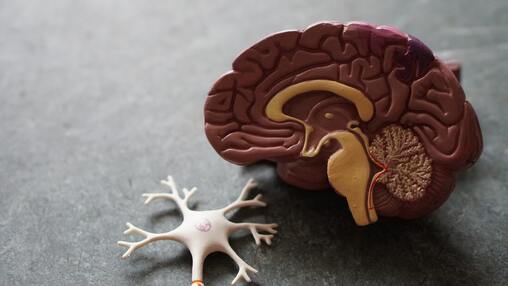 There are a lot of theories related to smoking and your mental health, and it has created a stigma for those who want to quit smoking, but are worried about how it will affect, and maybe even worsen, their depression, anxiety, and/or other mental health disorders. Below, we have debunked some myths about quitting smoking for anyone who is experiencing a mental illness.
For FREE resources on how to construct a quit plan, gain access to medical assisted treatment, or any type of clinical support, visit quitnowindiana.com or call 1-800-QUITNOW. 7/1/2021 3 Comments July 4th fun-tivities We all know that the fan favorite of activities to do on the fourth of July is to light fireworks, but what are we supposed to do with our families during the day? Here are 5 simple and fun things for you and your family to all enjoy together on the fourth: 1. Go for a walk or bike ride: summer only comes once a year for us in Indiana, so take advantage of the nice weather while we have it; and don't forget to drink lots of water! 2. Bake a fun, patriotic desert with your friends or family: from firecracker cake and flag fruit pizza, to stars & stripes trial mix and red, white, & blueberry bites, the opportunities are endless! 3. Put on your swim suit and play in some water: the hot summer weather calls for some swimming in the pool and running through the sprinkler! 4. Grab your grill and throw on some grub: nothing tastes as good as a burger or hot dog straight off the grill, but there are also some great veggie grilling options if meat is not your thing! 5. Make some popsicles with your kiddos: not only are popsicles a refreshing treat in the heat, but they are so simple and fun to make! From our families to yours, have a safe and fun holiday weekend! - The Jay County Drug Prevention Coalition 6/28/2021 1 Comment Tobacco use in the lgbt community Overall, lesbian, gay and bisexual adults* smoked cigarettes at rates significantly higher than straight adults and were nearly twice as likely to use e-cigarettes and cigars — trends due in part to targeted marketing by Big Tobacco. Transgender youth currently used tobacco products at higher rates than cisgender youth, including 4X higher cigarette use and 3X higher e-cigarette use. For years the tobacco industry has made efforts to appeal to LGBT consumers through things like targeted advertisements in LGBT press, cigarette giveaways, and free tobacco industry merchandise. Today, the LGBT community is among the hardest hit by tobacco. The tobacco industry has targeted the LGBT community for decades. Federal, state and local levels can take important steps to help reduce tobacco use overall, including among the LGBT community. Steps include:
5/31/2021 0 Comments Tobacco use and the military May 31st is both Memorial Day and the 33rd annual World No Tobacco Day, and these two days of observation might have more in common than you would expect. The U.S. military has a culture of tobacco use, which decades of tobacco industry targeting has helped create and support. Not only has this culture driven smoking rates to be significantly higher among service members than the rest of the population, it also impairs their military readiness and levels of performance. Prevalence and Trends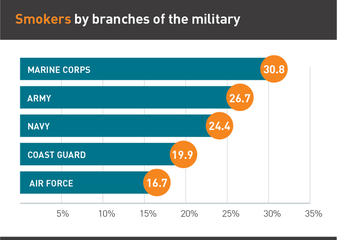
Members of the military face unique challenges in their battle against tobacco use, including prolonged deployments, cultural pressures and access to cheap tobacco products. Reducing tobacco use in the military is a critical step in protecting the health of the men and women who protect us. If you are a current service member or a veteran, you can access free help and resources at quitnowindiana.com or by calling 1-800-QUITNOW. For more information about tobacco use in the military, click here. 4/1/2021 0 Comments national take down tobacco dayNational Take Down Tobacco Day started in 1996 as a day of anti-smoking activism. Formally known as "Kick Butts Day", Take Down Tobacco Day has seen participation from teachers, kids, youth leaders, health advocates, and parents over the years to raise awareness of the problem of tobacco use in their communities. This national holiday began as a way to get anti-tobacco legislation passed, and has continuously encouraged kids to choose a tobacco-free lifestyle along the way! If you want to participate, here are a few ways to get involved today:
1. Gather with friends and family and pick up cigarette butts in your community; this isn't just a way to clean up the burden of tobacco, but also to raise awareness of the impact these products have on our planet! 2. Take a pledge with your kids and neighbors to be tobacco-free and post about it on social media; there is no excuse not to participate and get others involved! 3. Talk to your child about the dangers of smoking; tell your children about the harmful affects of smoking, and the benefits of living a tobacco-free life! And if you are a current tobacco user that would like to kick your "butts" to the curb, call 1-800-QUITNOW or click here for free resources to help you on your journey to choosing a tobacco free lifestyle! |
AuthorMultiple Authors including coalition staff, board members, and coalition members contribute to this page. Archives
March 2023
|
Location100 N. Meridian Street
Portland, Indiana 47371 |
About UsThe Jay County Drug Prevention Coalition (JCDPC) is part of the statewide network of the Indiana Commission to Combat Drug Abuse. The JCDPC is the Local Coordinating Council (LCC) for the community.
Contact UsGeneral Info:
(260) 251-3259 [email protected] Recovery Info: [email protected] Prevention Info: [email protected] |
|

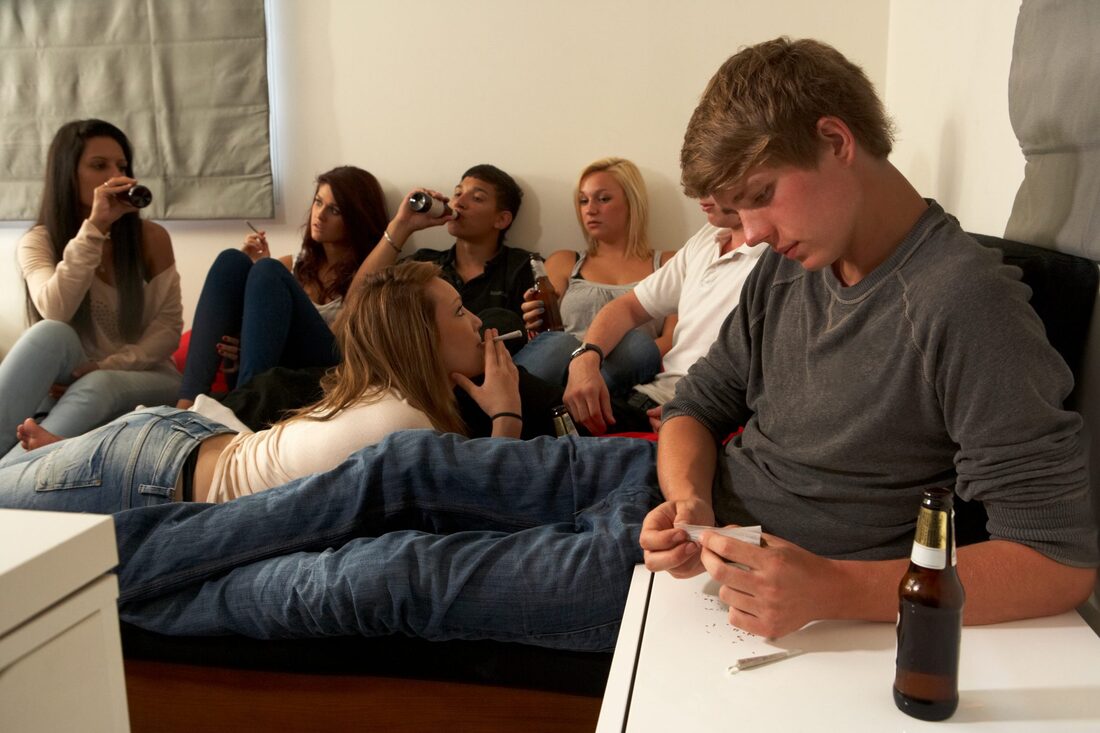

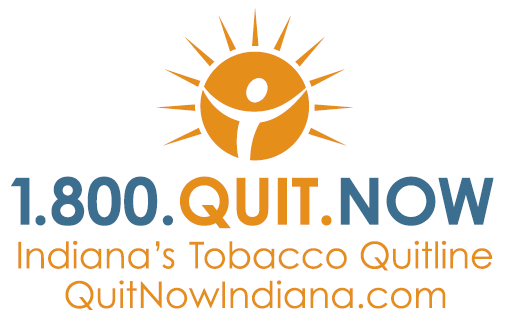
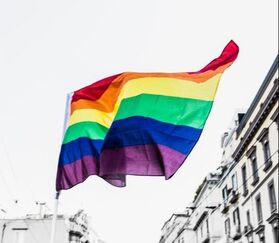

 RSS Feed
RSS Feed
